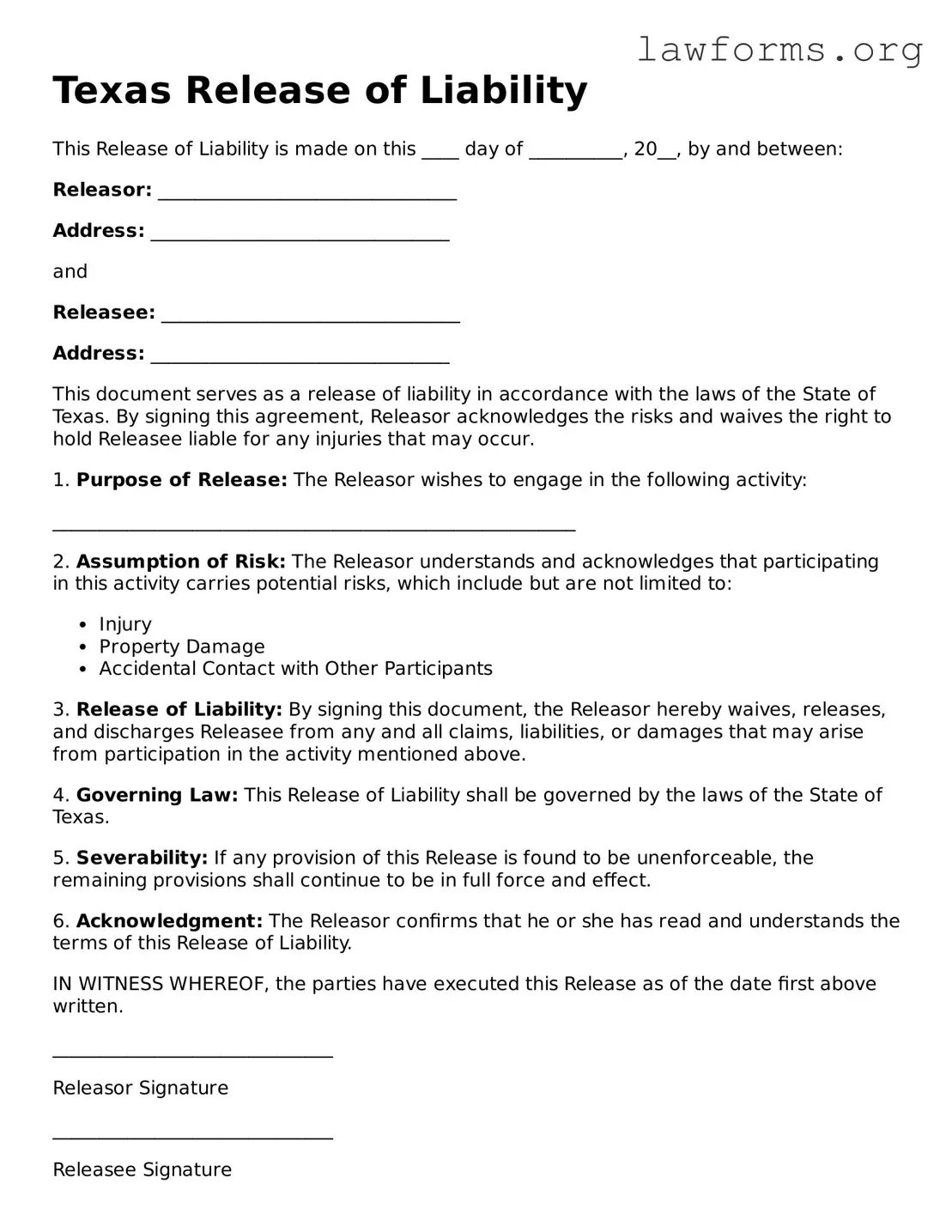Texas Release of Liability
This Release of Liability is made on this ____ day of __________, 20__, by and between:
Releasor: ________________________________
Address: ________________________________
and
Releasee: ________________________________
Address: ________________________________
This document serves as a release of liability in accordance with the laws of the State of Texas. By signing this agreement, Releasor acknowledges the risks and waives the right to hold Releasee liable for any injuries that may occur.
1. Purpose of Release: The Releasor wishes to engage in the following activity:
________________________________________________________
2. Assumption of Risk: The Releasor understands and acknowledges that participating in this activity carries potential risks, which include but are not limited to:
- Injury
- Property Damage
- Accidental Contact with Other Participants
3. Release of Liability: By signing this document, the Releasor hereby waives, releases, and discharges Releasee from any and all claims, liabilities, or damages that may arise from participation in the activity mentioned above.
4. Governing Law: This Release of Liability shall be governed by the laws of the State of Texas.
5. Severability: If any provision of this Release is found to be unenforceable, the remaining provisions shall continue to be in full force and effect.
6. Acknowledgment: The Releasor confirms that he or she has read and understands the terms of this Release of Liability.
IN WITNESS WHEREOF, the parties have executed this Release as of the date first above written.
______________________________
Releasor Signature
______________________________
Releasee Signature
______________________________
Date
